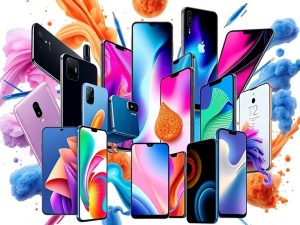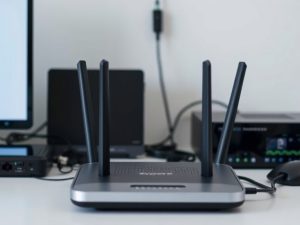In an era where technology permeates every aspect of our lives, misconceptions and myths about tech often abound. From the everyday user to industry professionals, these myths can lead to confusion, misinformation, and, in some cases, poor decisions. In this blog post, we will bust some of the most common tech myths and provide you with the facts to help you navigate the digital landscape with confidence.
Myth 1: More Megapixels Means a Better Camera
The Truth
While it’s easy to assume that a higher megapixel count equates to a better camera, this isn’t the whole story. Megapixels measure the resolution of an image, but they don’t determine the overall quality of the photos taken. Factors such as lens quality, sensor size, and image processing capabilities play a significant role in producing great images. For instance, a smartphone with a 12MP camera can outperform a 48MP camera if it has superior optics and better software processing.
What to Look For
When considering a camera, focus on other specifications, such as aperture size, sensor type, and features like optical image stabilization, which can significantly affect image quality.
Myth 2: Closing Apps Saves Battery Life
The Truth
Many users believe that closing apps running in the background will save battery life. However, on modern smartphones, this is often not the case. Operating systems like iOS and Android are designed to manage background tasks efficiently, and closing apps can actually consume more battery power. This is because reopening closed apps requires additional resources.
What to Do Instead
To extend battery life, consider adjusting your device’s settings, such as reducing screen brightness, disabling location services, and limiting background data for apps that don’t need it.
Myth 3: Private Browsing Means You’re Completely Anonymous
The Truth
While private browsing modes (such as Incognito in Chrome) prevent your browsing history from being stored on your device, they do not make you invisible online. Websites can still track your activity through your IP address, and your internet service provider (ISP) can see your browsing habits. Additionally, private browsing does not protect against malware or phishing attacks.
How to Enhance Online Privacy
To improve your online privacy, consider using a virtual private network (VPN) that encrypts your internet connection. Combine this with ad blockers and privacy-focused search engines to further limit tracking.
Myth 4: 5G Is Just a Marketing Gimmick
The Truth
5G technology is not just a buzzword; it represents a significant advancement in mobile connectivity. With faster speeds, lower latency, and the ability to connect more devices simultaneously, 5G enables innovations such as smart cities, autonomous vehicles, and enhanced augmented reality experiences.
Understanding the Benefits
While 5G networks are still being rolled out in many areas, the benefits are real. Users can expect improved performance for streaming, gaming, and other data-intensive applications. As the technology matures, its potential for transforming various industries will become even more apparent.
Myth 5: You Don’t Need Antivirus Software on Macs
The Truth
While it’s true that macOS is generally considered more secure than Windows, Macs are not immune to malware and cyber threats. In recent years, the number of malware attacks targeting macOS has increased, making it essential for Mac users to take security seriously.
Best Practices for Mac Security
To protect your Mac, consider using reputable antivirus software and keep your operating system and applications up to date. Additionally, practice safe browsing habits and be cautious when downloading files or clicking on links from unknown sources.
Myth 6: More RAM Always Means Better Performance
The Truth
Having more RAM can improve a computer’s performance, especially when multitasking or running memory-intensive applications. However, simply increasing RAM won’t solve all performance issues. Other factors, such as processor speed, storage type (SSD vs. HDD), and system optimization, also significantly impact overall performance.
Finding the Right Balance
When upgrading a computer, consider a holistic approach. Assess the entire system’s specifications and identify bottlenecks. For general users, 8GB to 16GB of RAM is typically sufficient for everyday tasks, while gamers and professionals may benefit from higher amounts.
Conclusion
As technology continues to evolve, so do the myths and misconceptions surrounding it. By separating fact from fiction, you can make more informed decisions about your devices, software, and online habits. Understanding the realities of tech helps you navigate the digital age with greater confidence and efficiency.
Stay curious, and don’t hesitate to explore beyond the surface of tech claims—after all, knowledge is power in our fast-paced digital world!




